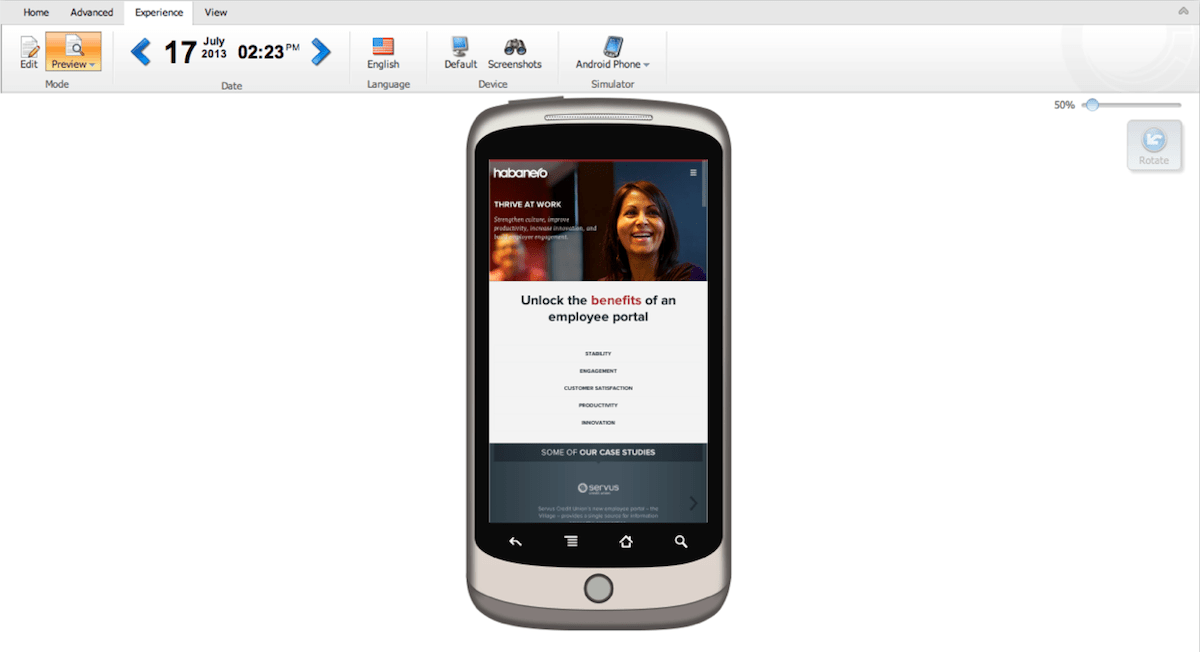Before organizations make a technology platform decision, I recommend they answer the following questions:
- How will you measure the performance (and overall success) of your portal?
- What is your communication and/or customer engagement strategy for the next two to three years?
- What is your device strategy, and how will different channels like mobile, email, social media, and campaigns work together?
- What is your CRM strategy and maturity?
- What team(s) do you have to support your customer portal and/or website as it evolves?
In many organizations, these are challenging questions to answer. However, assuming you have a solid strategy in place (we can help you figure that out!), then you’re in a much better position start considering your overall technology platform.
The landscape of tools
The Web Content Management (WCM) landscape is large, and there should be a platform out there to suit most needs. Gartner recently released the latest version of their Magic Quadrant for Web Content Management and it’s a good overview of the different platforms available.
Two popular .NET-based platforms Habanero builds websites and customer portals on are Microsoft SharePoint 2013 and Sitecore. This post isn’t about which platform is better (they both have strengths), but I wanted to clarify when you might consider one platform over another.
Sitecore strengths
Digital marketing
Sitecore is a robust platform that enables you to communicate to audiences in a rich, targeted way. I often recommend Sitecore for organizations that communicate with their audiences through multiple channels such as email, social media, and online campaigns, and want a way to bring some of that data together. Sitecore has analytics and tools to help bridge the gap between different channels and manage the overall customer experience.
Sitecore is also a strong platform for communicating to specific audiences based on location and persona. It enables you to show different content based on region or country, or create more sophisticated personas based on user activity. For example, you could display different calls-to-action if someone downloads a specific case study or whitepaper or is a repeat visitor.

The marketing features are a huge strength of Sitecore, but they require an investment and commitment to use the capabilities to their full potential. User research will help you develop effective personas and channels to add to Sitecore. Also, keep in mind that your marketing team and authors may need additional training and support to identify how and when to use certain features in the platform.
Testing tools for continuous evolution
Sitecore can also help you test what's working on your site and what’s not. Leveraging its A/B testing features enables you to present different content and/or interfaces to different users, and over a period of time, determine which experience is the most effective.
Advanced authoring support
There are a couple of authoring tools I find useful when developing a new site on Sitecore:
Device renderings provide a quick way to preview content on different devices. Although they don’t replace having the real device for testing, they can provide a quick check as you’re adding content and you want to see where headings or content break.

Aliases enable you to setup redirects. This is useful if you’re launching a new site and URLs change. For example, on launch day for the new HabaneroConsulting.com we had a few hundred 404 errors from Google. I saw this and quickly set up aliases to redirect those key pages that Google was displaying. The next day, we only had about a dozen 404 errors. I was able to do this immediately, without any development support, which is very powerful for authors!
SharePoint 2013 strengths
Familiar authoring and development tools
Organizations tend to use the SharePoint platform for their website or customer portal if they already have a significant investment in the platform (often for their intranet or employee portal). It makes sense for organizations to standardize on one platform to streamline authoring, development, and support. For example: authors who are familiar with page editing on their employee portal are able to easily switch to editing content for an external audience if both sites are built on SharePoint.
Wider breadth of capabilities
SharePoint does lack the rich marketing, targeting, and analytics features of Sitecore. However, SharePoint is not meant to be solely an online marketing tool; it’s also a social, collaboration, search, workflow, and business productivity platform too! Search is a critical part of many customer portals, and SharePoint has a well-integrated search experience for both traditional website and document content. If search is an important part of your portal experience, SharePoint is often a strong contender.
One point to mention is that the development effort needed to create websites on SharePoint can be higher than other platforms like Sitecore. However, we have found that SharePoint 2013 dramatically reduces the overhead of creating websites compared to previous versions.
My advice
Both Sitecore and SharePoint are mature platforms that can support a world-class website experience. Just remember: before you focus on the technology platform, you should create a solid vision, get the right people involved, determine your portal management and sustainment plan, and commit to ongoing enhancements — these are the essential ingredients of a successful customer portal.



.jpeg?bc=white&la=en&mw=416&modified=20251202191043&hash=E64AA9DFFAE8D1AC27890831F714D5B0FA2FEBB2)

